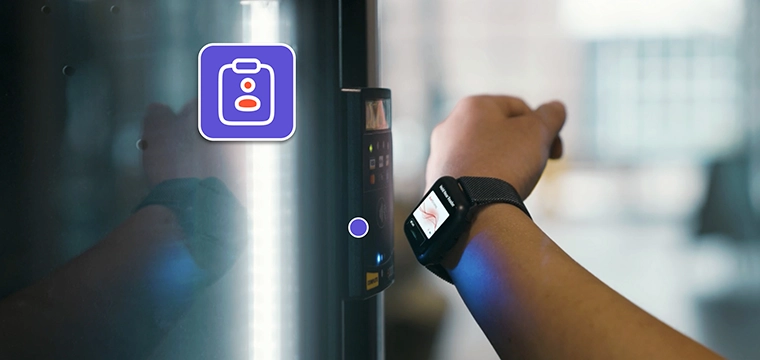 With most states slashing budgets, cash-strapped institutions have had to make tough choices. Some have chosen to freeze salaries, others have laid-off people and many have put construction and other campus projects on hold. Operating a campus card program is a significant expense so CR80News sought the assistance of campus card providers to build a list of cost savings tips.
With most states slashing budgets, cash-strapped institutions have had to make tough choices. Some have chosen to freeze salaries, others have laid-off people and many have put construction and other campus projects on hold. Operating a campus card program is a significant expense so CR80News sought the assistance of campus card providers to build a list of cost savings tips.
The following ideas were presented by Brian Adoff, Sales Manager, NuVision Networks; Fred Emery, VP Heartland Campus Solutions; Taran Lent, Vice President, CardSmith; and Read Winkelman, VP of Sales, The CBORD Group.
Operations
“Simplify campus card account plans to reduce administrative and financial reconciliation overhead. Eliminate meal and account plans that have less than 5% participation.”
“Use the reporting capabilities of your POS system to get a better handle on finances. For example, you can use the menu item sales report to compare items sold with actual production to determine potential waste. You can also analyze sales versus production over time to avoid under production that translates to lost sales.”
“Review annual maintenance contracts to determine the ongoing costs to maintain your system. Campuses may be able to install a cost-effective system for the same amount of money it would cost to maintain a pricier system for one year and then begin realizing cost savings the following year.”
“Be sure to pass costs to vendors. For example, campuses should be recovering fees charged by software providers to connect to bookstore or dining POS systems.”
New technology
“Reduce or eliminate paper waste by enabling cardholders to purchase tickets for events using their debit or e-purse account tied to their card. Cardholders would then swipe their card at the event to gain entry. This eliminates printing and distribution of paper tickets. It also increases security for events by letting organizers know who is going in and out and at what time.”
“Implement card-based electronic access control over key-based mechanical with a payback of less than two years. On a campus with mechanical keys when the semester ends students leave and the campus needs to lock them out. Some students will still have their keys so the university has to physically visit every exterior door and switch out the lock core. A schedule-based lockout via an online electronic access control system enables locks to be changed from one location.
Additionally, a mechanical lock system will have a master key or a set of master and sub-masters. Loss of one of those keys represents a huge liability and a cost to re-core all affected locks. Lost cards can be turned off immediately via an online electronic access control system.”
“An Internet protocol (IP) public address system can supplement an emergency notification system and can be more effective and less costly than text messaging. The quickest path to the brain is through the ear and there is no per message or per student cost with a public address system.”
“Use virtual card readers where feasible. The purchase of a card reader is not necessary in some areas of campus. If a location that needs a card reader already has a desktop computer in place the school can use a virtual reader in place of a physical one for a fraction of the cost.
A virtual reader has the same functionality as a physical card reader except that it runs on a computer and uses a keyboard with a card swipe. Bryn Mawr College in Pennsylvania currently uses five virtual readers in places like the catering center, mailroom and copy center. By opting for virtual as opposed to physical readers, Bryn Mawr saved almost $7,000 in purchasing costs.”
Payment processing
“Evaluate your current merchant services statement to ensure that your effective credit card rate (total fees for the month divided by total sales volume) does not exceed 2.1%.”
“Request interchange plus pricing from your merchant service provider. Not all transactions are priced the same. For example, check card transactions cost about 10% less than credit card transactions. Deals structured this way give you the best rate on every transaction.”
“For in office payments, swipe cards to get card present (vs. card not present) rates that are about 10% lower.”
“Re-evaluate the payment processor, making sure the school is not being charged “hidden” or “junk” fees. Some processors include fees that the merchant (or in this case, colleges) don’t know about, such as bill-backs or various card type fees. Sometimes processors will not disclose fees if a merchant does not batch out by a certain time. These add up.”
Marketing
“Collaborate with other card programs to negotiate bulk prices on print materials such as brochures, pre-printed card stock and “accepted here” stickers. Larger orders are easier for printers to manage and reduce the set-up/fixed costs for everyone. Also, cross-market and cost share with other on-campus departments/groups, especially dining services, first-year student orientation and campus tours.”
“Carding a new incoming class is hard work and expensive. Carding events can cost $5,000 or more when you account for card stock, print ribbons, and labor. Turn this high student traffic into a valuable sponsorship event. For example, let a local community merchant or third-party partner sponsor carding events for incoming students.”
IT and system architecture
“Explore professionally hosted, managed IT and software as a service (SaaS) transaction processing models. Also consider outsourcing the campus card program to a managed solution provider.”
“Use a comprehensive system from a single source to cut down on gateway/integration charges commonly incurred when trying to integrate multiple third-party systems as a primary solution.”
“Implement an online self-service account center to reduce phone calls and walk-in traffic. Done right, this can also automate value transfer to the campus card discretionary account.”
“Use open source community-based software such as Linux (operating system), MySQL (database), JasperReports (reporting).”
“Partner and collaborate with neighboring schools to share and centralize IT infrastructure costs.”
Potential revenue generators
“Off-campus merchant payment processing: This revenue sharing program could generate revenue for the campus and provide collaboration with the local merchants. And it doesn’t cost the school anything to implement.
When campuses want to take the card program off-campus they have startup costs–buying readers, phone lines, marketing to merchants, negotiating merchant agreements. Ongoing they have the costs of cutting checks to merchants for the purchases made in their store (minus whatever transaction fee they extract), reporting to merchants and terminal support.
When a program like this is outsourced to a provider that works in a revenue sharing model, the startup and ongoing costs can be eliminated. Instead, the outsourced provider handles all of the infrastructure, marketing, support, and payment to the merchant. The transaction fee paid by the merchant is shared by the university and outsourced provider.”
“Gain revenue through off-campus card use. For example, with Heartland’s Give Something Back Network, schools receive a portion of the purchase price from every off-campus transaction when cardholders use their OneCards.”
“Off-campus student discount programs offer special discounts from national and local merchants, such as Target.com, American Airlines, Amtrak, among others. Students pay a fee to participate in the program and access the discounts negotiated by the discount program provider. Discount program providers will often pay the university a commission for each student membership that the university is active in signing up. Card offices can offer student discount memberships and generate revenue through commissions with no initial costs.”
“Adding card-based payments to vending, copying, laundry environments can increase sales volume and revenues. A modest 15% increase in volume would return your hardware investment costs in less than three years. Many institutions experience much higher lifts. State University of New York at Fredonia saw a 97% increase in vending sales as a result of implementing online card-based vending while Plymouth State University in New Hampshire saw a 93% increase.”




